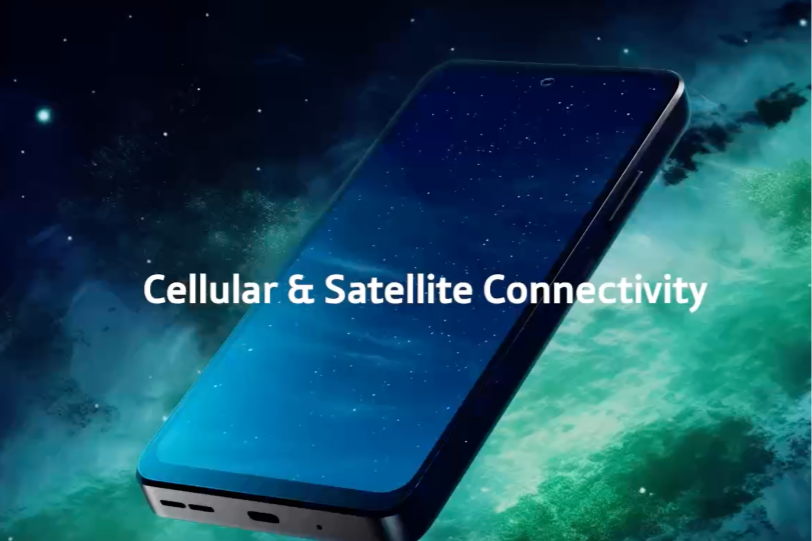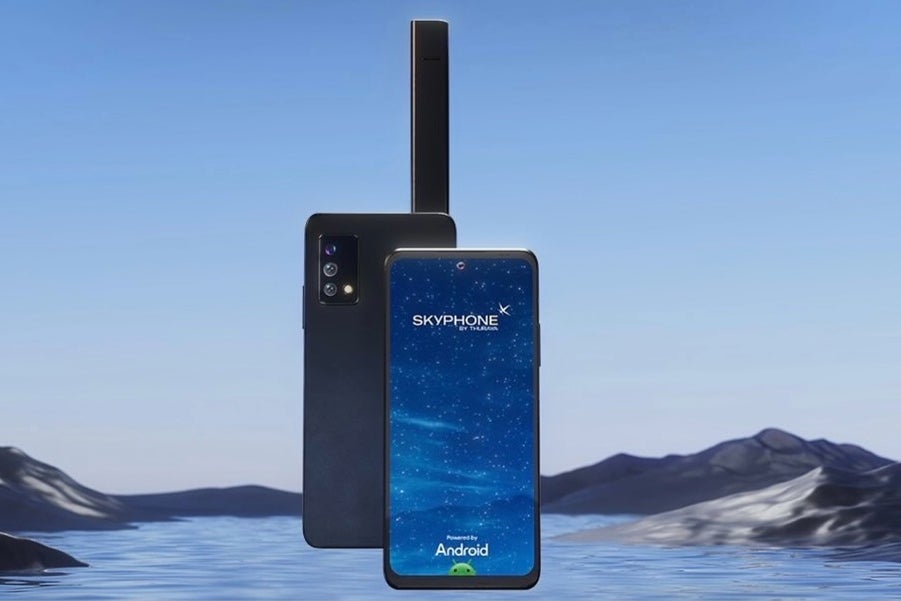Let’s dive in and explore this cosmic leap in communication technology.
How do satellite phones work?
Huawei Mate 60 Pro satellite connection (Image Credit–Huawei)
Unlike regular smartphones, satellite phones break free from reliance on cell towers. They directly link up with satellites orbiting the Earth. When you make a call or shoot a message, the signal zips from your phone to the nearest satellite, then hops to a ground station on the network, finally landing at its destination. This unique setup ensures connectivity in off-the-grid areas without cellular coverage.Cellular networks boast land-based towers, offering speedy and low-latency connections but with limited reach. Satellite connectivity, on the flip side, taps into orbiting satellites, granting global coverage even in far-flung spots. Yet, it often comes with slower speeds, higher latency, and heftier costs than cellular networks.
In a nutshell, while regular phones rely on towers, satellite phones claim the entire sky as their network, promising coverage that’s truly out of this world.
The life-savers in your pocket

Satellite smartphones aren’t just tech enthusiasts bragging rights; they’re actual lifelines in emergencies. When hurricanes wipe out cell towers, you work off-grid, or you’re trekking in a signal-free zone, these gadgets become your safety net. They enable you to shoot out SOS messages and coordinates to rescue teams.
However, for adventurers, globetrotters, and pros toiling in remote zones or at sea, these devices aren’t just safety tools. They’re crucial to staying linked with family and friends no matter how off the beaten path they are.
The trailblazers: Apple, Samsung, and Huawei

Image Credit–Apple
The arena of smartphones with satellite support is heating up, with tech giants like Apple, Samsung, and Huawei joining the cosmic connection race. Apple’s iPhone 14 series shook things up by introducing Emergency SOS via satellite, letting users send distress signals even off the grid. Not to be outdone, Samsung is reportedly gearing up to bring satellite capabilities to its devices, ensuring Galaxy users stay linked no matter where their adventures lead. Details are still under wraps, but the anticipation is sky-high.
Meanwhile, Huawei has already taken the plunge with its Mate 50 series, flaunting satellite messaging features that keep you connected when cellular or Wi-Fi networks are MIA. But keep in mind that this feature only works outdoors and within mainland China, using the Beidou navigation system.
It’s a bold leap into the future of global communication, proving that the sky is just the beginning, not the limit.
Why aren’t we all using satellite smartphones?

Image Credit–Thuraya
Wondering why satellite smartphones haven’t taken over yet? Well, it boils down to cost, at least for now. Launching satellites into space is a pricey affair, and the tech to make your phone satellite-friendly adds to the expense. However, as more folks jump on the bandwagon and tech keeps advancing, prices are expected to drop. Just think of the early days of flat-screen TVs: once a luxury, now a household staple. Besides cost, there’s more to mull over:
- Performance: Despite global coverage, satellite connections have their limits. They often come with slower data speeds and higher latency than cellular networks.
- Limited functionality: While some phones, like the Huawei Mate 60 Pro, nail full calling functionality, others, like Apple’s Emergency SOS via Satellite, stick to basics, allowing text messaging for emergencies.
- Battery life: Satellite communication is tougher on a phone’s battery than cellular connections, potentially leading to shorter battery life.
- Market saturation: Cellular networks are already widespread and offer budget-friendly plans globally. This makes it tough for satellite connectivity to grab hold, especially given its current limits and higher costs.
- Focus on emergency use: Right now, satellite connectivity in smartphones seems more geared toward emergency communication rather than replacing traditional cellular networks. The sky’s the limit, but it’s a work in progress.
The future is calling: Hybrid smartphones?

Image Credit–Thuraya
The potential of satellite smartphones is limitless. As technology evolves, we can anticipate more affordable models, better battery life, and sleeker designs. Companies like SpaceX and OneWeb are working to blanket the Earth with satellites, promising even better coverage and connectivity. This could mean that, in the not-so-distant future, dropped calls and “No Service” notifications could become relics of the past.
Hybrid smartphones like the Skyphone mentioned earlier could offer a solid solution. They pack all the perks of an Android smartphone but smoothly switch to satellite signals when needed. With your SIM card snug inside, these devices tap into Thuraya’s (the phone manufacturer) satellite connection when you are off the grid. It’s akin to roaming, and just like roaming, you pay a bit extra for the talk minutes spent over the satellite link.
Hybrid smartphones could indeed be the future but, honestly, for users who really need them. Most of us rarely encounter situations requiring a satellite connection; our cellular networks suffice. Hence, splurging over $1000 on a hybrid phone might make sense only for those who have to have one but still desire smartphone functionality.
I mentioned $1000, but reality could sting more. Take the Thuraya X5-Touch, the Skyphone’s direct forerunner, for example. It ran on Android 7 with specs outdated even for its time, yet boasted a hefty retail price (around $1,300). Considering this, the newly unveiled Skyphone, though its price remains undisclosed, could soar even higher in cost.
Let’s wrap it up

As we stand on the brink of this new era, it’s clear that the future of communication is not just about connecting people; it’s about connecting people everywhere (the old Nokia slogan, anyone?). Next time you glance at the night sky, remember: there’s a network of satellites ensuring we stay connected, and soon, that connectivity might be right in your pocket.

